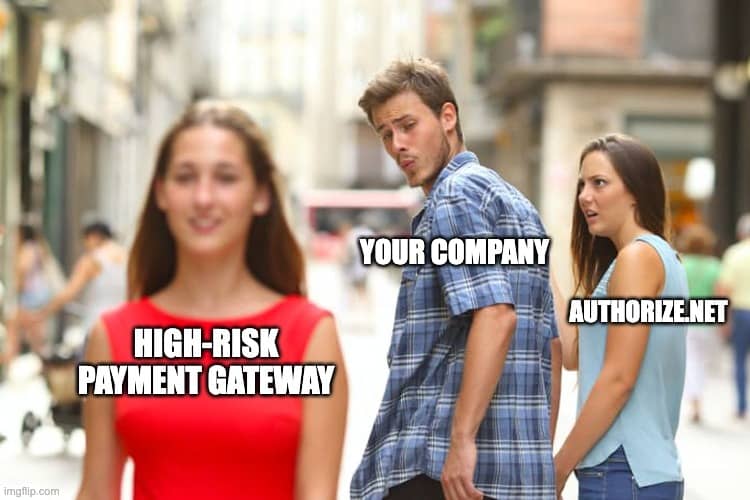What is Friendly Fraud?

Friendly fraud is a type of chargeback that occurs when the cardholder disputes a purchase because they believe that their credit card was stolen or misused by someone else. It’s called friendly fraud because it’s often committed by people who know and trust each other, such as family members and spouses.
Friendly fraud costs businesses an estimated $2 billion annually in chargebacks and associated fees; however, there are ways to prevent this fraudulent activity from happening in your store or eCommerce business.
Friendly Fraud Facts
Friendly fraud is a type of fraud where a customer disputes a transaction they made. It can be either intentional or unintentional, but it’s not the same as insurance fraud—you’re trying to get something for nothing.
Friendly fraud often arises from misunderstandings: maybe you thought your purchase would be covered by your credit card company when in fact, it wasn’t; perhaps you disputed the charge after realizing that it was made on an old card number (even though you permitted that), or maybe there was some other reason why you didn’t know that the transaction had gone through successfully until after you were charged.
What are the common chargeback reasons for friendly fraud?
While a stolen card or fraudulent identity causes some friendly fraud, there are other reasons that people commit friendly fraud. The most common chargeback reasons for friendly fraud include:
- The cardholder disputes the charge for the reason that’s not valid. For example, they may claim they never made the purchase or that it was unauthorized.
- The cardholder disputes the charge after the purchase has already been made and delivered (but before any payment has been collected).
- The cardholder disputes the bill because they don’t like the vendor and want their money back (or at least get them out of their inbox). In these cases, no one ever gained access to their account or used sensitive data from their credit card—and yet they still want to initiate a dispute because they don’t feel good about doing business with this company. This behavior isn’t necessarily illegal, but it can be costly for both companies and consumers!
How do I authenticate a legitimate transaction?
Authentication, a process of confirming the legitimacy of a transaction, is usually done through three steps:
- Verifying the cardholder’s identity
- Confirming the validity of their card
- Checking the details of the transaction
- Verifying a person’s identity – Usually, this involves asking for proof of identification (e.g., driver’s license).
- Confirming that you’re dealing with an actual Visa card – You can look up your customer’s name on your account and then call Visa to check if they have an open line or closed account with another financial institution.
- Containing transaction details - When accepting online payments at checkout or over phone orders, it is essential to ask questions about why they are making this purchase and how long they’ve been using our service before completing it, so there isn’t any confusion. Later on down in this process.”
Who commits friendly fraud?
Everyone is susceptible to friendly fraud, and it’s often committed by people who would otherwise be considered good customers. Younger people or those with poor credit commit the most common types of friendly fraud. Younger people, who are more likely to use their credit cards for online purchases, may not understand the difference between a refund and a charge reversal and vice versa. They also may not realize that some credit card companies will not reimburse them for any unauthorized purchases made within the last 120 days (when many banks require you to report your stolen card to receive reimbursement).
Younger people are more likely than older generations to commit friendly fraud because they haven’t had as much experience managing their finances and thus don’t know what types of charges should be disputed and which ones aren’t worth wasting time on—this could include anything from an incorrect address on a delivery being added as an additional cost to an item purchased online being damaged during shipping due to poor packaging practices by the merchant. But even if these errors happen in reverse order—if your package arrives safely but has been charged additional costs after reaching its destination—younger people still might not realize this was because they weren’t careful enough when checking out at checkout (maybe they didn’t notice how high shipping costs were before clicking “buy”).
What age group commits friendly fraud most frequently?
The most common age group that commits friendly fraud is 18-34. It’s followed by 35-54, then 55+. While 18-34 is the most common age group, 55+ are slightly more likely to commit friendly fraud than they were a few years ago.
How often does the same customer commit friendly fraud?
While friendly fraud is not as common as its nefarious counterpart, it’s still a problem. According to a recent Javelin Strategy & Research study, only about 3% of all online shoppers admitted to having committed friendly fraud in the past year. This means that 97% of shoppers are honest; they aren’t trying to steal from retailers or card issuers when they make purchases online.
That said, some people are more likely than others to commit friendly fraud—and we’ve already given you some ideas about who these people might be. What other factors increase the likelihood that someone will commit friendly fraud? The age group most likely to commit friendly fraud is aged 25-34 (8%), followed closely by those aged 35-44 (7%). On average, across all age groups, 7% admit they’ve committed this kind of fraud at least once in the last 12 months; however, among millennials (those born between 1981 and 1996), 11% admit doing so!
Does gender affect who commits friendly fraud?
You may be wondering if gender affects who commits friendly fraud. The answer is yes, but not in the way you might think.
Men are more likely to commit friendly fraud than women, but that doesn’t mean women don’t ever commit it. Women are more likely to be victims of friendly fraud because they are more likely to trust someone who asks for their credit card information over the phone or online.
What kind of cardholder commits friendly fraud?
The cardholder who commits friendly fraud is often a young person or a student. The cardholder can also be an adult parent who may be tempted to use their credit card to deceive the company into thinking that they are paying for something purchased by someone else.
Friendly fraud can happen in all types of situations, but it seems most common when the person committing the act is a man between the ages of 18 and 34 (the millennial generation).
Why do people commit friendly fraud?
Friendly fraud is committed for a variety of reasons. Most people do it because they want to get a refund or product without having to return the item.
Here are some examples:
- You bought something, but it didn’t work as advertised. You can either send it back and get your money back—or you could lie about not receiving the item (this would be friendly fraud).
- You ordered something on sale, but when you got home and realized how much money you’d saved, it seemed too good to pass up! So maybe now that new pair of shoes has gone missing in the mail…maybe? (Friendly fraud)
- You were trying out a new online shopping site for the first time. You realized halfway through checkout that there wasn’t going to be any way for them to verify whether or not your address was actual if they decided not to ship anything or send out an email confirmation with tracking info attached before sending anything off into cyberspace after placing an order from them; so why not just make up an address? (Friendly Fraud)
How do I prevent friendly fraud?
- Automate your payments. As with most things in life, the more you can automate a process, the less human error and room for mistakes there will be. When it comes to payments, this means making sure that all of your recurring payments are set up to happen automatically through a service like Stripe or Braintree.
- Use a risk management system. Risk management systems are explicitly designed to identify suspicious transactions and flag them before they become an issue. They alert you when something is amiss with a customer’s purchase or account information. This can help prevent fraudsters who have already taken over someone’s credit card before they know anything has gone wrong.
Friendly fraud is, unfortunately, all too common.
Friendly fraud is, unfortunately, all too common. Every year, merchants lose billions of dollars to friendly fraudsters who use stolen credit cards or fake identities to buy products online. Fraudsters will often use the card they know has a low and high credit limit, so they can make small purchases over time without attracting attention. This process is known as “friendly” because the customer does not intend to deceive the merchant, but if you’re an e-commerce business owner, it’s still costly for you in terms of revenue loss or chargeback disputes.
And while there isn’t a surefire way to prevent every instance of friendly fraud from happening, there are ways that you can mitigate your risk—and even profit from it!
Conclusion
We hope this post has helped you understand friendly fraud and the steps you can take to prevent it. Friendly fraud is a serious issue, but by taking the proper precautions and being aware of who might be committing it, you can protect your business from this costly mistake. Thanks for reading!
Read Next

Find out whether Authorize.Net works for high risk merchants, what restrictions you might face and how to get approved.

Get expert advice on selling CBD products on Shopify, including compliance tips and setting up secure payment options.

Find out why Square may deactivate merchant accounts and steps to resolve issues and maintain uninterrupted payment services.
Need a High-Risk Merchant Account?
Disruption-free payment processing at the best price for your situation, guaranteed.
Get Free Guidance Now!